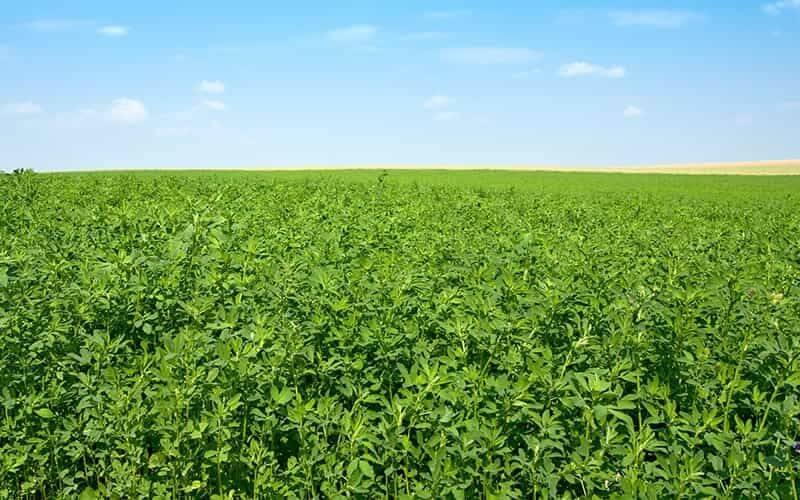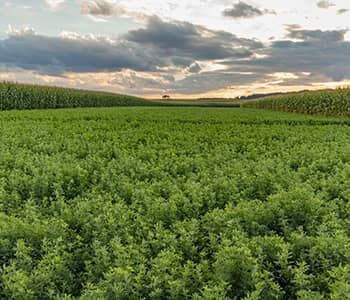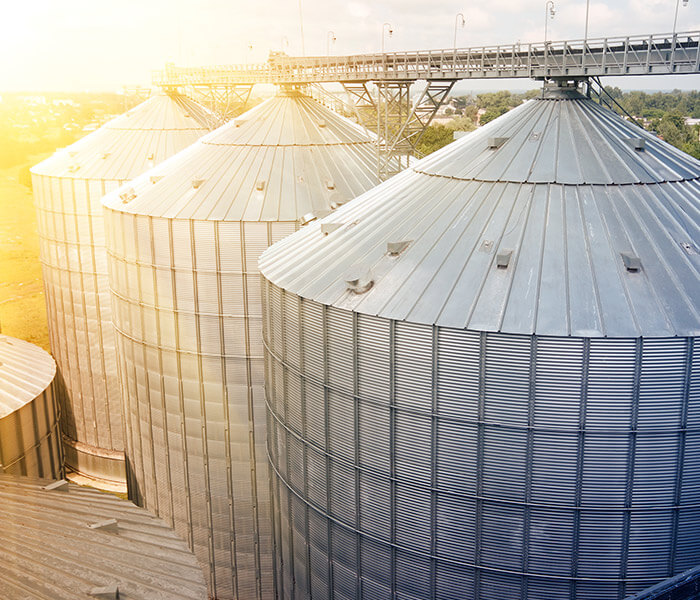All About Alfalfa
Enhancing your alfalfa yield potential
Enhancing your alfalfa yield potential is easier now with the addition of several new tools.
Make sure you check the basics first; soil pH, phosphorus (P), Potassium (K), and Sulfur (S).
Then these 5 yield enhancing products and tools work great when you have your soil fertility foundation built.
1. Priaxor® from BASF
Rate: 4-6.9 oz/A. Timing is on 6-8 inch tall alfalfa plant growth with a minimum of 15 GPA, and Pre-Harvest Interval (PHI) of 14 days. Ideal timing is to get this on first crop (also recommend second and last crop). Excellent control of plant disease like Spring and Summer Black Stem as well as Common Leaf Spot and multiple races of Anthracnose. This may give significantly better leaf retention and potential for higher feed value.
2. ASCEND® Plant Growth Regulator (PGR)
Rate: 3.2 oz/A. Timing is on 6-8 inch tall alfalfa plant growth with a minimum of 15 GPA. Ascend® plant growth regulator may be tank-mixed with Headline® and insecticides. ASCEND® plant growth regulator contains 3 distinct growth promoters. Their effect on alfalfa when applied foliar in a well-managed environment is to speed the rate of DM accumulation – possibly shortening the cutting interval and allowing the capture of higher quality and more tonnage over the season.
3. MAX-IN® Foliar Micro-Nutrients
MAX-IN® Boron, Timing is the same 6-8 inches of plant growth. Boron - the most responsive element for foliar application; the MAX-IN® Boron micronutrient formulation is applied at the rate of 1 pt/A, and may be tank-mixed with most anything you are spraying. Best results are seen when applications are made during active growth 2nd thru 4th crop. Boron can become more limiting in dry soils. MAX-IN® Boron micronutrient tank-mixes well with Ascend® plant growth regulator, Priaxor® and many insecticides.

Make sure you check the basics first; soil pH, Phosphorus (P), Potassium (K), and Sulfur (S).
4. Arctic® 3.2EC Insecticide
Rate: 4-8 oz/A. Timing is when insect levels reach threshold. Apply before plant yield loss occurs. Contains permethrin for broad-spectrum control of insects in alfalfa. Tank-mixes well with ASCEND® PGR, MAX-IN® products and Priaxor®.
5. NUTRISOLUTIONS® Tissue & Soil Test
Manage macro- and micro- nutrients to promote high forage production:
-
Soil test to ensure that soil pH levels are on target. Alfalfa requires a neutral soil pH for high production. Also, review the test to ensure the necessary macro- and micro- nutrients are present to fuel alfalfa growth.
-
Test plant tissue to verify the need for micronutrients and secondary nutrients.
-
Test soil to take inventory of the nutrients that are available and those that are lacking:
-
pH 6.8 – 7.2 (lime alfalfa ground one to two years before seeding)
-
Potassium (Potash or K) soil test = 300 lbs. or 150 ppm
-
Phosphorous (P) soil test = 50 lbs. or 25 ppm
Al Stelpflug
Crop Production Specialist






